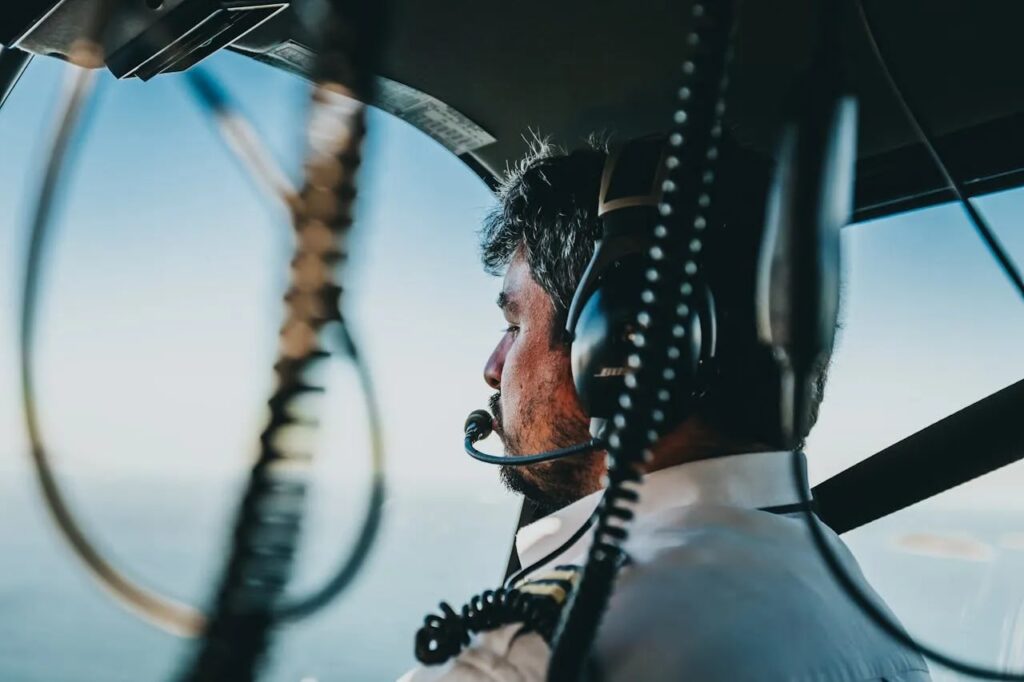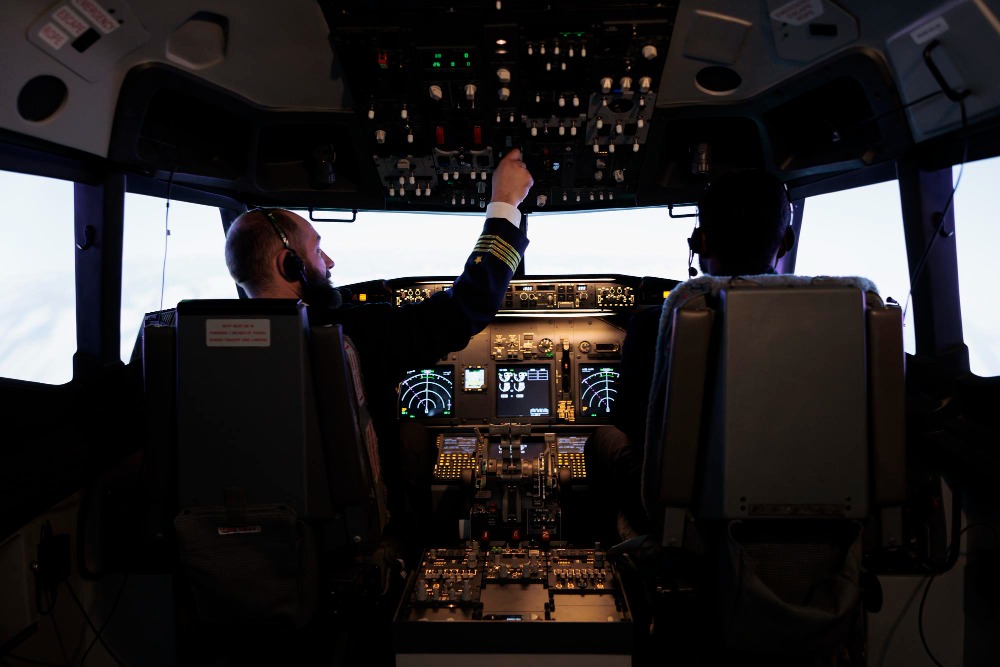Ever wondered if your pilot is catching some shut-eye while you’re 35,000 feet in the air? Surprisingly, the answer is yes—and it’s one of the reasons air travel remains so safe. On long flights across time zones, pilot rest isn’t just allowed—it’s essential. But don’t worry: every snooze happens under strict safety rules.
Through carefully coordinated crew shifts, in-flight rest strategies, and constant cockpit supervision, airlines ensure that pilots are always sharp when it matters most. From quick cockpit naps to hidden bunk beds, structured rest is a critical part of keeping your journey smooth, secure, and expertly managed from takeoff to landing.
Pilot Fatigue and the Need for Rest

Piloting a commercial aircraft demands constant focus, quick reflexes, and precise decision-making. However, long hours in the cockpit can lead to exhaustion, increasing the risk of mistakes. To prevent this, aviation authorities enforce strict fatigue management protocols to ensure pilots stay alert throughout their flights.
Lack of rest can have serious consequences, even for experienced pilots. Fatigue can lead to:
- Slower reaction times – Delays in responding to weather changes, system alerts, or air traffic instructions.
- Impaired judgment – Increased likelihood of making errors under pressure. In extreme cases, operational fatigue can contribute to flight delays or cancellations, which may entitle passengers to financial compensation under EU Regulation 261.
- Reduced situational awareness – Missing critical radio calls, altitude changes, or aircraft system alerts.
To counteract fatigue, aviation authorities such as the FAA and EASA have implemented strict rest regulations, including:
- Mandatory pre-flight rest periods – Pilots must have adequate time off before operating a flight.
- Controlled rest in the cockpit – On certain flights, one pilot may take a short nap while the other remains in command.
- Crew rotations on long-haul flights – Additional pilots share responsibilities, ensuring everyone receives proper rest.
By following these structured rest policies, airlines ensure that pilots remain alert and capable throughout the flight. Whether through scheduled breaks or carefully timed cockpit naps, these systems are designed to maintain maximum safety for both the crew and passengers.
Controlled Rest vs. Bunk Rest: How Pilots Sleep
Pilots must remain focused for long hours, but fatigue can set in during extended flights. To manage this, airlines use two primary rest methods: Controlled rest in the cockpit and Bunk rest in dedicated sleeping areas.
Controlled rest in the cockpit is a short nap taken by one pilot while the other remains in control. It follows strict guidelines to ensure safety.
- Duration: Usually 10 to 40 minutes, just enough to restore alertness.
- Prevention of deep sleep: Pilots wake up before entering a deep sleep phase to avoid grogginess.
- Monitoring: The resting pilot is always woken up before critical phases like descent and landing.
- Effectiveness: Studies show short naps significantly improve alertness and reaction time.
Bunk rest in dedicated sleeping areas is used on long-haul and ultra-long-haul flights, where additional pilots rotate shifts and take rest in crew sleeping compartments.
- Location: Hidden areas in the aircraft, often above or below the passenger cabin.
- Amenities: Beds or reclining seats, temperature and lighting control, and noise insulation for better sleep quality.
- Rest periods: Pilots alternate shifts to ensure at least two remain in the cockpit at all times.
Both rest systems are essential for preventing fatigue and ensuring flight safety. They allow pilots to stay sharp and capable of …handling any situation during long journeys. In contrast, when airline staffing issues or fatigue mismanagement result in last-minute disruptions, travelers might face overbooking, missed connections, or denied boarding—and they have the right to report it.
Flight Crew Scheduling and Regulations
Pilots must follow strict work-hour limits to prevent fatigue and maintain flight safety. But how long can a pilot fly before they need a rest? Aviation authorities have established clear guidelines to ensure they receive adequate rest between and during flights.
Pilots cannot work unlimited hours. Aviation agencies like the FAA (Federal Aviation Administration) and EASA (European Union Aviation Safety Agency) enforce regulations to prevent overexertion, including:
- Maximum flight hours – Pilots are restricted to a set number of flight hours per day, week, and month.
- Mandatory rest periods – A minimum rest time is required before and after flights to ensure full recovery.
- Augmented crews on long-haul flights – Extra pilots are added to rotate shifts on ultra-long-haul flights, preventing fatigue.
To comply with these rules, airlines use scheduling systems that monitor pilot work hours and adjust assignments accordingly. Factors considered include:
- Time zone changes – Crossing multiple time zones can impact sleep, requiring strategic scheduling.
- Flight duration and workload – The number of hours in the cockpit determines how many pilots are assigned to a flight.
- Rest opportunities – Airlines incorporate Controlled rest in the cockpit and Bunk rest in dedicated sleeping areas to manage fatigue during flights.
By strictly following these scheduling and rest policies, airlines ensure that pilots remain alert and fully capable of managing flights safely.
Who Controls the Plane When a Pilot Is Asleep?

Pilots take scheduled rest breaks on long flights, but the aircraft is never left unattended. Strict regulations ensure that at least one qualified pilot is always in the cockpit, monitoring the flight and handling communications.
When one pilot sleeps, the other assumes full responsibility for navigation, system checks, and coordination with air traffic control. On long-haul flights with augmented crews, additional pilots rotate shifts to ensure that fatigue never compromises safety.
Modern aircraft are also equipped with autopilot systems that assist with maintaining altitude, speed, and course. However, pilots must remain alert to respond to unexpected situations such as turbulence, weather changes, or technical issues.
Before resting, pilots conduct a briefing to ensure a smooth handover of duties. The resting pilot remains on standby and can return to the cockpit immediately if necessary. These procedures guarantee that the flight remains under full control at all times.
Do Passengers Need to Worry About Pilots Sleeping?
No, passengers have nothing to worry about when pilots take scheduled rest breaks. Aviation is one of the most highly regulated industries, with strict fatigue management protocols designed to keep flights safe.
Even on long-haul flights where pilots sleep, the cockpit is never left unattended. At least one fully qualified pilot remains in control at all times, ensuring that flight systems, navigation, and communications are constantly monitored. On ultra-long-haul routes, additional pilots rotate shifts to maintain full awareness throughout the journey.
Modern aircraft also feature advanced autopilot systems, which handle tasks like maintaining altitude, speed, and course. However, pilots are always present to manage critical phases of flight, respond to weather changes, and handle unexpected situations.
Strict regulations ensure that pilots are well-rested, alert, and capable at all times. Passengers can relax knowing that their flight is in safe hands, no matter how long the journey is.
Conclusion
Pilots sleep on long flights under strict regulations to maintain safety. Resting is essential for managing fatigue, ensuring they stay alert throughout the journey.
Controlled rest in the cockpit allows for short naps, while bunk rest in dedicated sleeping areas provides deeper sleep on longer flights. Crew rotations prevent overwork, ensuring pilots remain refreshed and focused.
With at least one pilot always in control and autopilot handling routine tasks, flights stay safe. Passengers can fly with confidence, knowing well-rested pilots are at their best.
FAQ
On long-haul flights, pilots rest in dedicated crew rest compartments, typically located above or below the main cabin. These areas feature flat beds, reclining seats, temperature control, and noise insulation to ensure quality sleep. For shorter flights, pilots take controlled rest in the cockpit, where they can briefly nap while the other pilot remains in command.
The maximum time a pilot can fly without rest depends on aviation regulations and crew structure. In most cases, pilots can fly for 8 to 9 hours before requiring a break. On long-haul flights with additional crew members, shifts are rotated, allowing pilots to rest after extended duty periods while keeping the cockpit fully staffed.
Regulations set strict limits on pilot duty hours to prevent fatigue. Under FAA and EASA rules, pilots can fly a maximum of 8 to 9 hours for standard crews and up to 14-16 hours with augmented crews. The total duty period, which includes pre-flight preparations and post-flight tasks, may extend beyond the flight time, requiring airlines to schedule mandatory rest periods.
